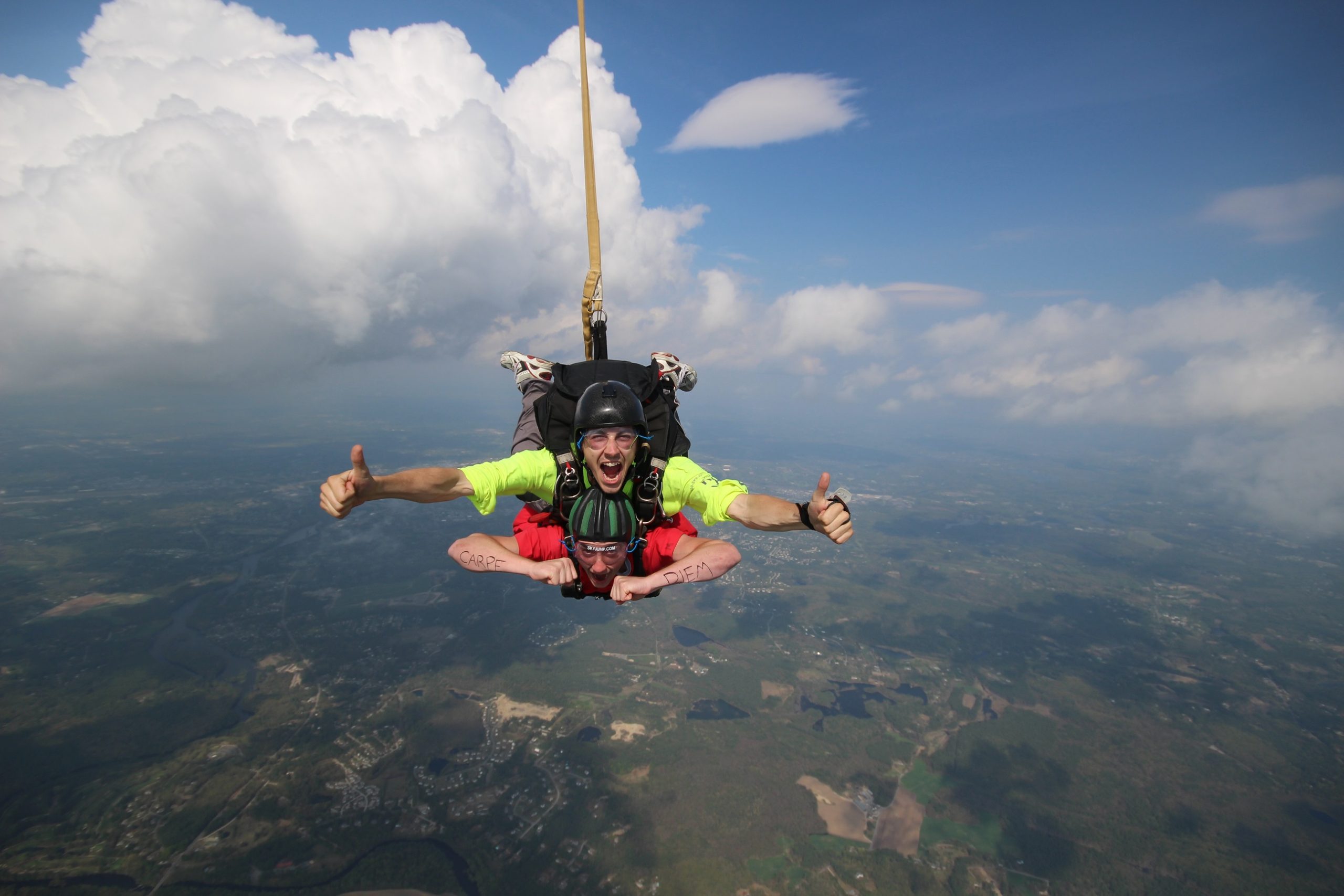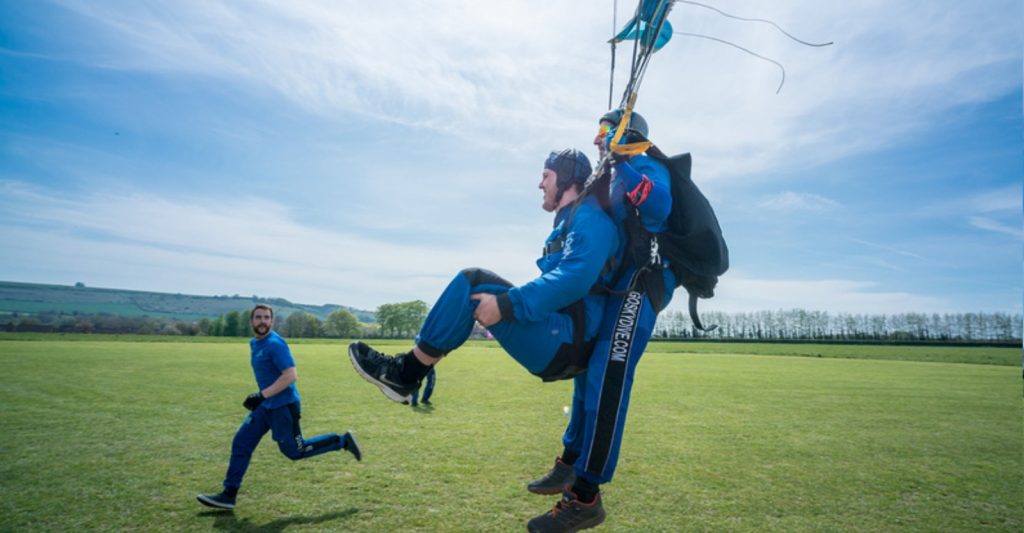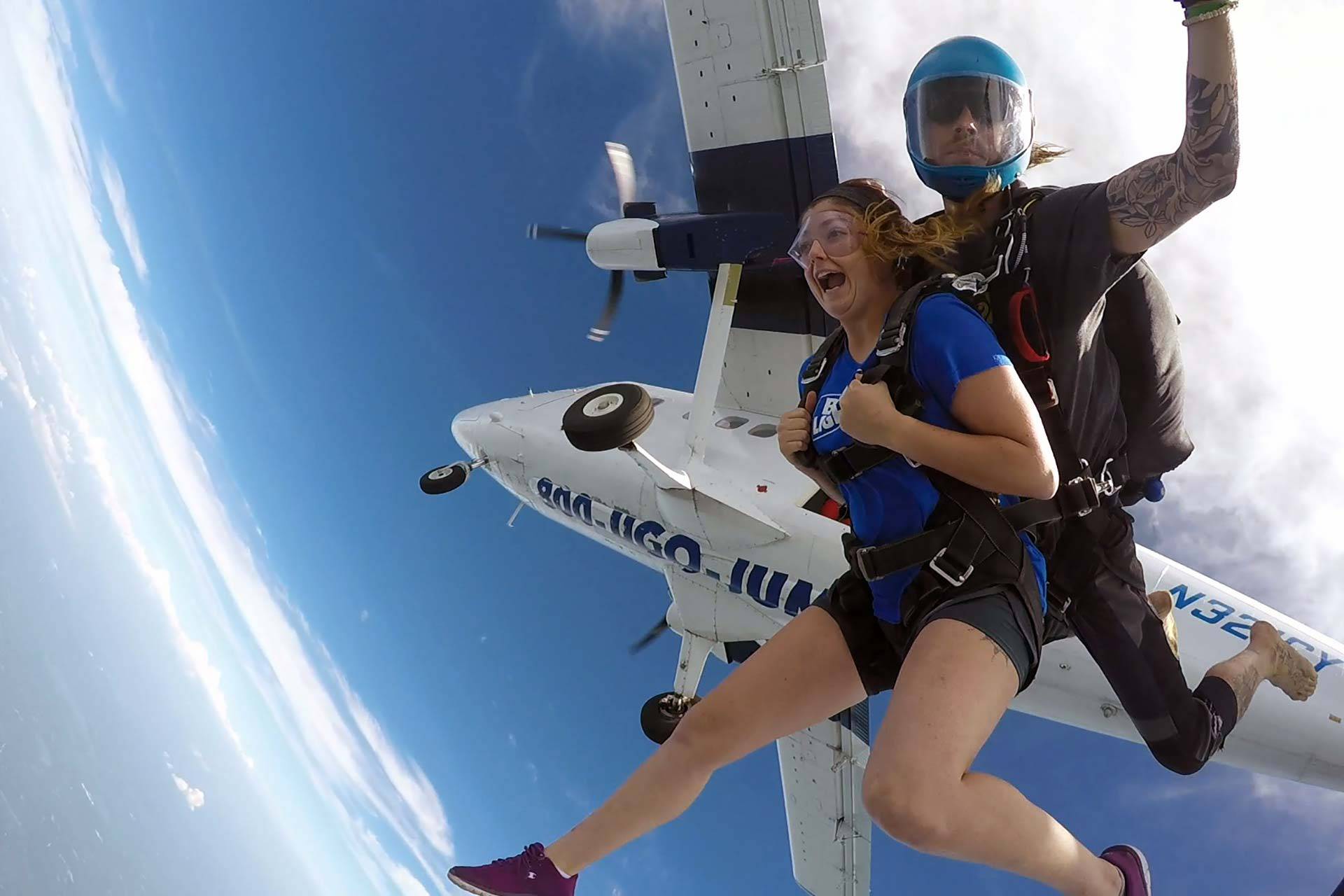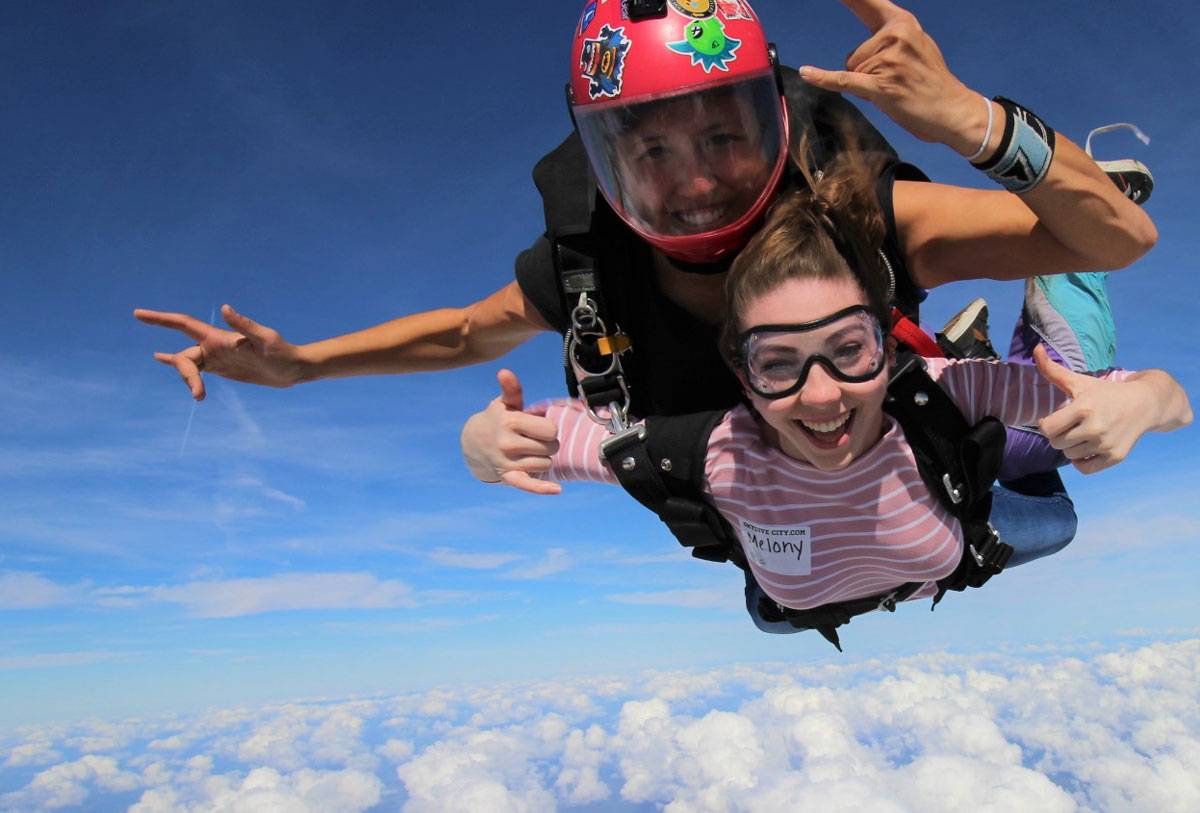Imagine the thrill of free-falling through the sky, the wind whipping past, and the ground rushing up to meet you. Skydiving is an unparalleled adventure, a unique experience that many yearn to try. However, like any extreme sport, it comes with its share of restrictions, primarily for safety reasons. One such restriction that often raises questions is the weight limit for skydivers.
You might wonder if these weight limits are arbitrary or discriminatory. But that’s far from the truth. They’re in place to ensure the safety and comfort of both instructors and students. The weight limits can vary from one dropzone to another, but they’re always there for a reason. Let’s find out the rationale behind these limitations and help you know why they’re crucial in the world of skydiving.

Contents
What Is The Weight Limit For Skydiving?
The weight limit for skydiving varies depending on the skydiving center and the type of jump (tandem vs. solo). Here’s a breakdown:
Tandem Skydiving: This is the most common option for first-time skydivers, where you jump with an instructor strapped to your back. Weight restrictions for tandem skydiving typically fall within the range of:
- 200-220 pounds (91-99 kg) for women
- 230-250 pounds (104-113 kg) for men
Solo Skydiving: This is for experienced skydivers who have undergone training and certification. The weight limit for solo jumping can be higher than tandem jumps, but it’s still important to ensure safety and proper equipment fit. Limits can vary depending on the dropzone, but a general range might be around 240 lbs (109 kg).
Reasoning Behind Skydiving Weight Limit
The weight limits imposed by skydiving centers are primarily for safety reasons, affecting both the skydiver and the instructor (in tandem jumps), as well as the overall operation of the jump. Here are the key reasons behind these weight limits:

1. Parachute Limitations:
Stress on the Parachute: Parachutes are rated for specific maximum weights, and exceeding this limit can increase the risk of malfunction or failure. The weight limit ensures that the descent speed stays within safe parameters, allowing the parachute to function as designed.
Control and Maneuverability: Heavier weights can affect the parachute’s performance, including its ability to glide, turn, and land safely. Staying within the weight limit ensures that the skydiver or tandem pair can control the parachute effectively during descent.
2. Aircraft Safety:
Weight Distribution: The weight of all passengers and equipment needs to be carefully managed to maintain the aircraft’s balance and performance during takeoff, flight, and landing. Exceeding the total weight limit can pose a risk to the safety of everyone on board.
Emergency Situations: In the event of an emergency, being able to exit the aircraft quickly and safely is crucial. Ensuring that all skydivers are within a certain weight range can facilitate a more orderly and efficient evacuation if necessary.
3. Tandem Jump Considerations:
Instructor Safety: In tandem jumps, the instructor bears the brunt of the physical strain during the jump, freefall, and landing. Higher weights can increase the risk of injury to the instructor, especially during the landing phase.

Equipment Stress: The harnesses and other equipment used in tandem jumps are also rated for specific weights. Exceeding these limits can put undue stress on the equipment, increasing the risk of wear or failure.
4. Landing Impact:
Harder Landings: Higher weights result in faster descent rates, which can make landings harder and increase the risk of injury. This is a concern for both tandem and solo jumpers.
Injury Risk: The risk of sprains, fractures, or more severe injuries during landing is higher for heavier individuals, particularly if the landing is not executed perfectly.
5. Physical Fitness:
Ability to Control the Fall: Skydiving requires a certain level of physical fitness to control one’s body during freefall, deploy the parachute, and manage the landing. Weight limits help ensure that participants have the physical capability to safely complete the jump.
Do You Have to be Physically Fit to Skydive?
While you don’t need to be a marathon runner to go skydiving, a certain level of physical fitness is beneficial for a safe and enjoyable jump. Here’s a breakdown:

Minimum Requirements:
- Mobility: You should be able to climb in and out of the airplane comfortably, and move your limbs without restrictions. This ensures you can participate in the pre-jump briefing, positioning, and landing procedures.
- Strength: Some exertion is required during the jump. You’ll need to be able to lift your legs for landing (the instructor might stand you up upon landing in some cases) and maintain a stable body position during freefall.
- Cardio: While skydiving itself isn’t particularly strenuous on your heart, a base level of cardiovascular health is important. It helps you manage the excitement and physical demands of the jump.
- Overall Health: It’s crucial to be in good overall health with no medical conditions that could be worsened by skydiving. This includes heart problems, uncontrolled high blood pressure, or recent surgeries. Consulting your doctor beforehand is always recommended, especially if you have any pre-existing conditions.
Here are some things you can do to prepare for your skydiving experience:
- Light Exercise: Regular exercise routines that focus on core strength, leg strength, and cardiovascular health can be beneficial. Activities like swimming, running, or light weightlifting can help prepare your body.
- Practice Landing Techniques: Some skydiving centers offer practice sessions where you can learn the proper landing posture to absorb impact.
You can go skydiving without being in peak physical condition, but a basic level of fitness is recommended for safety and to maximize your enjoyment. Consult with your doctor if you have any concerns about your health, and don’t hesitate to ask the skydiving center about their fitness requirements before booking your jump.
Frequently Asked Questions
What is the significance of weight limits in skydiving?
Weight limits in skydiving are crucial for ensuring safety and balance during the dive. The Body Mass Index (BMI) and the height-to-weight ratio play a key role in determining these limits to ensure a smooth and safe experience for each skydiver.
Why are weight limits different for men and women in skydiving?
The difference in weight limits for men and women in skydiving is primarily due to physiological differences. Each sex has unique body compositions, strength levels, and center of gravity, which can affect the dynamics of the dive and thus require distinct weight considerations.
Is physical fitness required for skydiving?
Physical fitness is highly recommended for skydiving, especially strength and flexibility. It not only enhances the overall experience but also aids in maneuvering during the dive and ensuring a safe landing. Seek medical advice if you have any health-related concerns.
Do health conditions affect skydiving?
Yes, underlying health conditions can affect skydiving. Any individual planning to skydive should consult a medical professional prior to the dive to assess fitness level and determine any potential risk factors.
Can someone with hypertension or cardiovascular disease skydive?
Skydiving can put undue stress on the heart due to increased adrenaline, which results in a higher heart rate and increased blood flow. Thus, individuals with hypertension or cardiovascular disease must consult their healthcare provider before making a skydive.

Santhan, known to many as Linda, combines her personal training expertise with exceptional motivational coaching skills. Her articles are not just informative but also incredibly inspiring, encouraging readers to take action and pursue their fitness goals. Linda’s unique approach to writing integrates practical fitness guidance with motivational elements, making her content both useful and uplifting.
